
Plants That Look Like Palm Trees (But Aren’t)
If you’re on the hunt for plants that resemble palm trees but aren’t actually palms, you’re in the right place. While palm trees are often recognized for their elegant, towering stature and fan-like or feather-like leaves, several other plant species can easily be mistaken for palms due to their similar appearance. Here’s a list of plants that look like palm trees but don’t actually belong to the palm family.
1. Sago Palm (Cycas Revoluta)
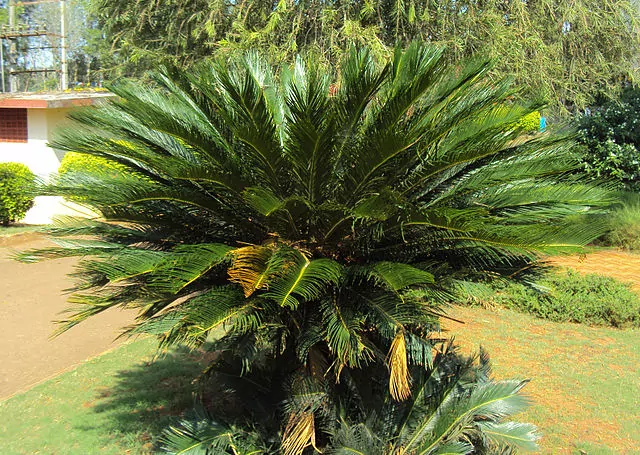
The Sago Palm, often referred to as the “Japanese sago palm” or “king sago,” is a shrub native to southern Japan. Despite its name, it’s not a true palm but rather a member of the cycad family. This plant grows slowly, reaching up to 10 feet (3 meters) and is perfect for both gardens and as a houseplant. It’s characterized by long, feathery, glossy green leaves that grow in a rosette at the top of a stout trunk. Though it looks like a palm, it’s a cycad and doesn’t share the same botanical classification as true palms.
2. Ponytail Palm (Beaucarnea Recurvata)
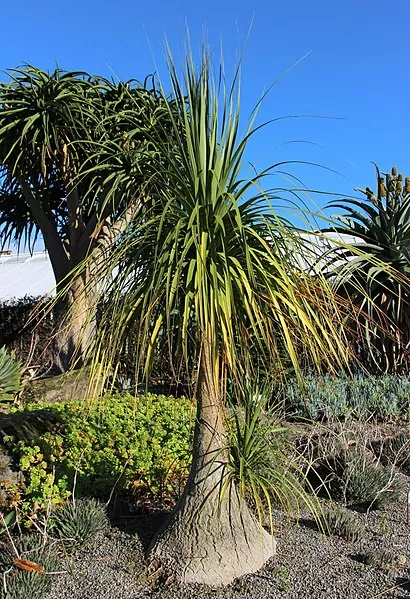
Known as the “elephant’s foot” or “bottle palm,” the Ponytail Palm is native to southeastern Mexico. This plant gets its name from its long, curly leaves that resemble a ponytail, but don’t be fooled—it’s not a true palm! The Ponytail Palm has a swollen trunk at its base, which helps it store water and survive droughts. It’s an easy-care plant that has become popular as a houseplant worldwide.
3. Yucca Plants
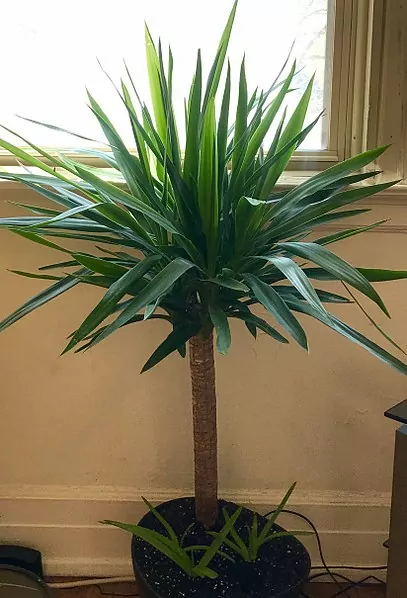
Yucca plants are actually part of the Asparagaceae family, not the palm family. These plants, like Yucca gigantea (Yucca cane) and Yucca rostrata (Beaked yucca), are often grown for ornamental purposes. Their long, stiff leaves and tall, upright growth give them a palm-like appearance, making them look quite similar to certain types of palm trees. Yuccas are hardy plants that thrive in arid climates, perfect for dry gardens or as indoor houseplants.
4. Dragon Trees (Dracaena spp.)
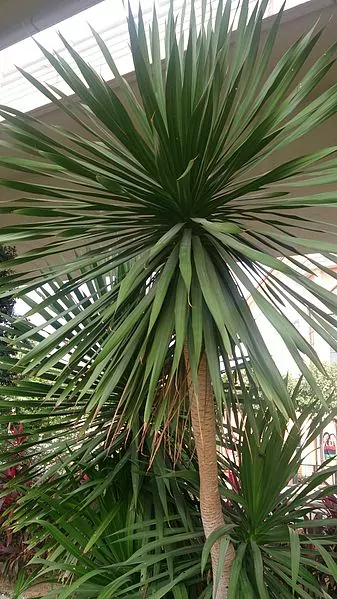
Dragon trees, especially species like the Madagascar Dragon Tree (Dracaena marginata) and Canary Islands Dragon Tree (Dracaena draco), are often mistaken for palm trees due to their long, sword-like leaves that grow from the top of a woody trunk. Although they resemble palms, they belong to the Dracaena genus in the Asparagaceae family. Dragon trees are popular houseplants and add a touch of the tropics to indoor spaces with their vibrant foliage.
5. Traveler’s Palm (Ravenala madagascariensis)
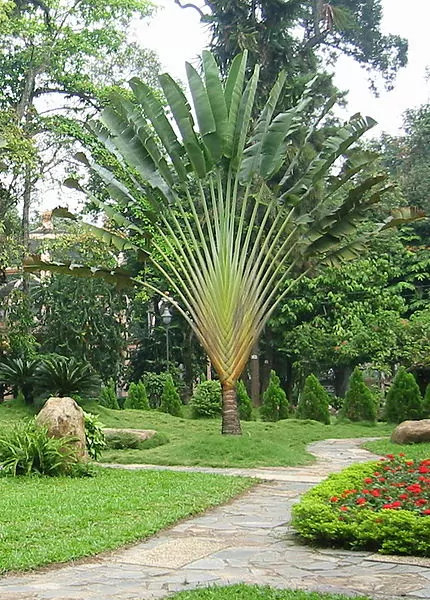
With its fan-shaped leaves arranged in a row on top of a trunk, the Traveler’s Palm looks remarkably similar to a palm tree, but it’s not one. Native to Madagascar, this plant is actually part of the Strelitziaceae family. It’s often grown for its unique, exotic look and can be found in tropical gardens or used in landscaping to create a dramatic effect.
6. Madagascar Palm (Pachypodium Lamerei)

Despite the name, the Madagascar Palm isn’t a palm at all. It’s a stem succulent from Madagascar that grows with a tall, spiny trunk. The plant’s crown of shiny, narrow leaves gives it a palm-like appearance, but it’s botanically distinct from true palms. When grown outdoors, it produces large, fragrant white flowers, adding to its ornamental appeal.
7. Banana Palm (Musa acuminata)
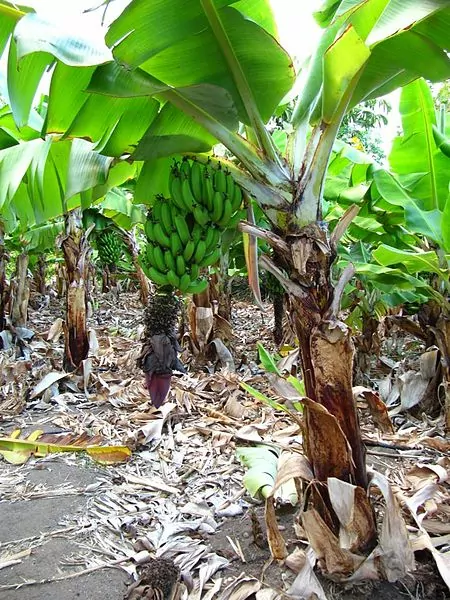
The Banana Palm, often referred to as the Banana Plant, is a fast-growing plant native to Southern Asia. Although it’s commonly called a palm, it’s technically not one. From a botanical standpoint, it’s a giant herb, not a tree. The banana plant grows large, paddle-shaped leaves and produces edible fruit, making it a popular addition to tropical gardens.
8. Cardboard Palm (Zamia Furfuracea)
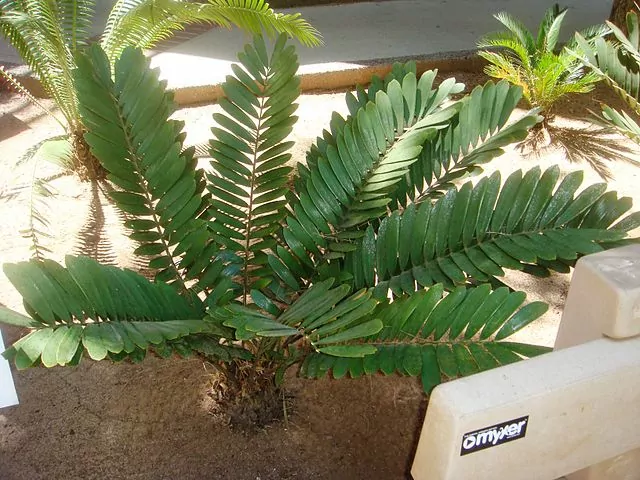
Native to Mexico, the Cardboard Palm (Zamia furfuracea) is another plant that resembles a palm tree but isn’t one. It’s a cycad, which is a type of seed plant that often gets confused with palms due to its similar appearance. The Cardboard Palm has a stiff, woody trunk with feathery, pinnate leaves, making it look like a small palm tree.
9. Gum Palm (Dioon Spinulosum)
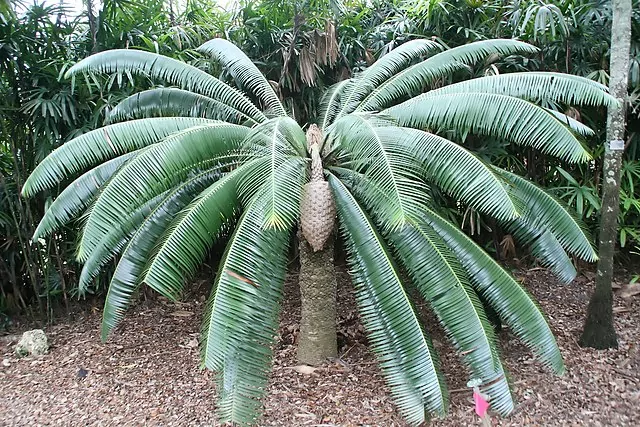
The Gum Palm is a species of cycad found in tropical rainforests in Mexico. Though it has the appearance of a palm tree with its feather-like leaves and rosette growth, it is not a true palm. The Gum Palm is notable for its height and its bluish-green leaves that radiate from a central trunk. It’s often grown as an ornamental plant in tropical and subtropical climates.
10. Vulcan Palm (Brighamia Insignis)
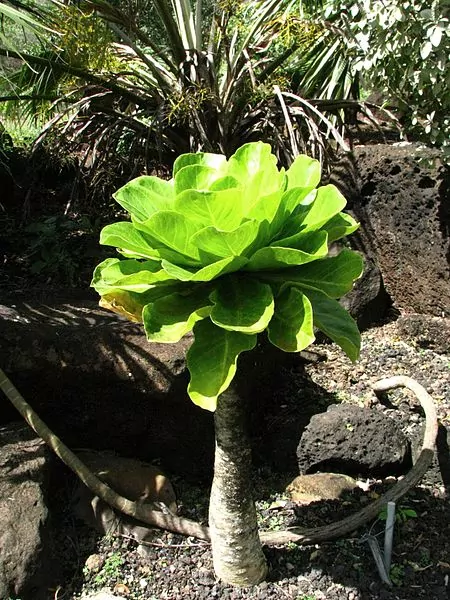
Native to Hawaii, the Vulcan Palm (Brighamia insignis) has a unique look that mimics a palm tree. With a swollen base and a rosette of fleshy leaves at the top, it resembles a palm trunk topped with palm-like fronds. However, it’s not a true palm tree but a member of the Campanulaceae family.
In Conclusion
While these plants may resemble palms due to their tall, spiky leaves and trunk-like growth, they all belong to different plant families and are not true palms. Whether you’re looking to add some tropical flair to your garden or house, any of these “palm-like” plants will make an excellent addition without being actual palm trees.
❓ FAQs: Plants That Look Like Palm Trees
Q1: Why do some plants look like palms but aren’t palms?
🌿 They’ve evolved similar features (like trunk and leaf structure) due to similar environments—a phenomenon known as convergent evolution.
Q2: Are any of these safer or easier to grow than real palms?
Yes! Plants like Ponytail Palm and Dragon Trees are much more drought-tolerant and indoor-friendly than many real palm species.
Q3: Which one is best for indoors?
🌿 Ponytail Palm and Dragon Tree (Dracaena marginata) are great for homes and offices due to their low light and water needs.
Q4: Are any of these toxic to pets?
⚠️ Yes! Sago Palm and Cardboard Palm are highly toxic to pets. Always check toxicity levels before bringing one indoors.
Q5: Can I plant these in cold climates?
Some (like Yucca and Dracaena) tolerate cooler weather, but most are best grown indoors or in tropical/subtropical zones.






